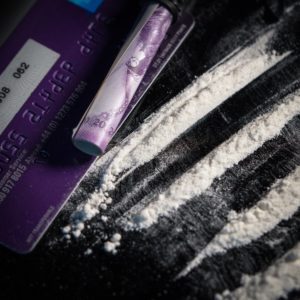7 Reasons To Seek Addiction Treatment
Substance use disorder, which is more colloquially known as drug addiction, is a serious mental...
toll free: 844.955.3042
local tel: 561.464.6505
fax: 561.450.6637
info@recointensive.com
RECO Intensive
140 NE 4th Avenue
Delray Beach, FL 33483
Today’s headlines are ever-plagued by references to America’s unresolved opioid epidemic, the tangled history of which I’ve addressed in a few of my past posts, including a few of the other posts in this series, which was developed in conjunction with local theatre company New City Players in order to investigate issues of addiction explored in the play as well as in our community and our country’s history.
However, opioids are far from the first drug to have held a powerful sway over the American people. Crack cocaine, which also happens to be the drug that a significant portion of Water By The Spoonful takes place in a chat room devoted to recovery from, once occupied a similar place in the public consciousness—and it once had similarly devastating effects on the lives of thousands.


After cocaine faded from popular American use after it was initially outlawed in the early 1900s, the drug gradually regained prominence throughout the 60s and 70s. It then came roaring back to the center of national attention in the mid-1980s with a boom of cocaine importation and the emergence of crack, a far cheaper version of the drug that offered users a more intense and shorter-lived high.
At once, what had formerly been only a “rich man’s drug” was suddenly infinitely more accessible than it had ever been—just when it was also becoming more addictive than it had ever been. Predictably, abuse of the drug took off, most vehemently in impoverished Black communities—communities where widespread poverty and oppression sweetened the temptation of escaping through a euphoric high and where many young men lacking more reputable opportunities for employment were desperate enough to turn to dealing to make ends meet.
Thus, the toll this epidemic took as it emerged during the eighties is evident not only in the rising rate of cocaine-related overdoses and hospital visits but a near doubling of the homicide rate among Black men aged 14-24 as inter-community violence increased due to cocaine-related street wars.
There was also a notable increase in the number of Black children in foster care as Black families were destroyed by crack’s impact. A recent Netflix documentary exploring the era called Crack: Cocaine, Corruption & Conspiracy describes not only multitudes of women who lost or gave up custody of their children due to their crack addiction’s brutality, but one mother who was reportedly willing to swap her four month old son for 20 dollars worth of crack cocaine.
Though the horrors of the time were all too real, sensationalized media coverage of the problem and the government’s misguided attempt to curb it would ultimately only add to the Black community’s struggles. The genuine ugliness of the 1980s crack problem provided the conservative Reagan right with the perfect excuse to ramp up the “war on drugs”—which, in practice, amounted to a war on underprivileged drug users.
This involved measures like the Comprehensive Drug Abuse and Control Act, which allowed police to seize assets from drug raids on those too poor to pursue legal retribution, and the Anti Drug Abuse Act, which massively increased federal funding for law enforcement and sharply increased the penalties for drug-related crimes. Under this act, a variety of mandatory minimum sentences for drug crimes were introduced, including those in which crack-related crimes were punished with mandatory sentences a hundred times longer than those associated with cocaine related crimes.
This measure, which essentially acted to punish only those who utilized the cheaper version of the two near-identical drugs, was so egregious in its disproportionate effect on people of color that even a congressional staffer responsible for helping to write the law later referred to it as the “most unjust criminal law in history.”


The media contributed to this calamity by peddling portraits of crack users as crazed and monstrous, throwing out alarmist warnings about “crack babies” without sufficient scientific evidence, and slinging racialized terms like “super predator” and “welfare queen” that played into existing negative stereotypes about Black people. This served to dehumanize them in the eyes of lawmakers and of the public, which in turn seemed to justify these unfathomably harsh punishments.
While Nixon’s initial conception of the drug war at least included provisions for addiction treatment, Reagan’s strategy shifted almost entirely to one focused on punishment, with his policies leading the number of nonviolent drug offenders incarcerated in the US to go from 50,000 in 1980 to 380,000 in 1989—giving us one of the highest such rates in the world.
The entire story gets even more sinister if you consider allegations that the infusion of cocaine that spurred on this epidemic was the result of the CIA’s complicity with Nicaraguan drug smugglers who they encountered during the Iran-Contra affair. If true, this would make the government partially responsible for the epidemic itself as well as its aftermath of inequalities.
The specter of crack also set the stage for later developments during the H. W. Bush and Clinton eras that only worsened the mass incarceration problem, such as Bush’s investment in the prison-industrial complex and Clinton’s damning 1994 Crime Bill.
Because of these policies, this fraught social climate, and the massive amount of racial profiling law enforcement engaged in, Black people became significantly more likely than white people to be charged with and convicted for drug crimes, and were consistently sentenced more harshly than even white crack users. People of Latinx descent were also disproportionately targeted for crack and other drug offenses relative to white people, though to a slightly less intense extent.


Chutesandladders in New City Player’s production of Water by the Spoonful
At the darkest points in the resulting disparity, between 1991 and 1995, more than 13 Black defendants were imprisoned for every white one, and, between 1991 and 2001, nine times as many Black as white people were sent to federal prison for crack offenses. These statistics become even more insane once one takes into consideration that, though a slightly higher percentage of Black people than white people use crack, the fact that white people outnumber Black people population-wise means that the absolute number of white crack users is higher. Or, as Water By The Spoonful character Chutesandladders (who, like the other online characters, spends most of the show identified only by his screen name) puts it:
Wow, that little white rock sure doesn’t discriminate.
Chutesandladders, a sarcastic but good-hearted Black IRS paper-pusher, is one of the four characters who we meet waging their own “war” on drugs as they help each other to stay sober via a chat room on a fictional website called RecoverTogether.
He and site admin Haikumom, a Latina custodian with a troubled family history, could be conceptualized as more or less fitting into crack cocaine stereotypes. But the play also showcases the diversity of those who abuse crack cocaine in the inclusion of Orangutan, a character of Asian descent who is also conceptualized in our production as queer and non-binary, and Fountainhead, a well-off and obnoxious white businessman who’s about as far off as you can get from the down-and-out-crackhead stereotype.
So it’s not surprising that the intense stigma and damning stereotypes associated with crack cocaine seem to play a part in Fountainhead’s reluctance to come to terms with or even fully admit to his life-threatening addiction to it. Though the character eventually admits to being on his “seven hundredth day of hell” after repeatedly finding himself unable to quit on his own, Fountainhead still takes great pains to downplay his condition.
“At least it’s not heroin,” he makes a point of emphasizing.
Ironically, another character who has struggled with prescription opioid dependence later appears to consider himself superior to the “crackheads” on the forum and their seemingly more reckless illicit drug use. Yet little good can usually come of such distinctions and hierarchies, which often only serve as futile ways for those in the midst of addiction to attempt to hold on to their ego and to their denial of the seriousness of their disease. By the end of the play, both have shown great personal growth in being more willing to acknowledge the truth and gravity of their condition, and both have taken laudable steps towards starting their lives anew.
However, on a broader cultural scale, the differing responses to the crack and opioid epidemics is a fascinating issue to consider—and especially so because of how much evidence there is that the disparity may have been driven by the opioid epidemic’s disproportionate effect on people who were middle class and white.
This meant that many people of a similar demographic who had previously viewed addiction as something that affected only “the other,” were suddenly forced to reconceptualize it as a legitimate disorder rather than a moral failing now that it had hit close to home. Partially due to a predominantly white media establishment, cultural portrayals of opioid users followed suit, showing opioid users as sympathetic victims and as full human beings rather than as out-of-control criminals.
The differing demographics of the opioid crisis also meant that people whose loved ones were being affected by the crisis had more resources and were more empowered, which made them more successful at pursuits like lobbying legislature—and the lawmakers themselves were also more likely to have had their own personal experiences with opioid victims.
Partially because of factors like these as well as the opiate epidemic’s greater scope and higher body count, with some even questioning whether the crack “epidemic” should be considered one at all as opposed to a moral panic in light of the opioid epidemic’s far starker numbers, more federal funds were earmarked for addiction treatment and prevention than during the crack era, when the primary concern was with crime and punishment.
But this inequity holds a particular sting for members of Black communities that were not treated with the same basic compassion. In an in-depth article on the disparity from App.com, a Black woman named Michelle Goodwyn, whose crack addiction was so severe that she does not remember giving birth to her own children, bitterly reflected:
“All of a sudden the white kids are starting to die so now it’s a problem. But it’s been a problem. . . Why didn’t they give a f— about us? All of a sudden it’s a big thing because somebody’s nephew or son died . . . But we’ve been dying for years.”


Photo from Water by the Spoonful rehearsals
And the damage incurred from crack cocaine and its ripple effects still reverberates throughout the Black community, including in the fact that many who were imprisoned under unfair crack strictures remain behind bars to this day. It actually wasn’t until 2010, one year after Water By The Spoonful takes place, that the damning 100-1 ratio was reduced to an only slightly more sensible 18–1, and the intense racial bias that plagues our justice system more broadly continues to show far less favor to Americans of color.
The stigmatizing attitudes around crack are also evident in the social acceptability of casual jokes about the life-altering drug that would be far less palatable if opiates were their subject. Such prejudices have also left their mark in the continual use of demeaning terms like “crackhead,” which has a meaning so inextricable from crack’s racial politics that some have argued that it should be considered not only a highly derogatory term but an anti-Black slur.
Of course, it’s hard to begrudge Water By The Spoonful’s characters—or any real people who have similar histories—for using the term “crackhead” to poke fun at or sardonically describe themselves. But for the rest of us, an effort to be more sensitive when alluding to crack addiction could only be for the best. As some of our expert speakers at Forum reminded us, we can seldom be sure who among us may have had experiences that could lead such a reference to hit close to home.
In the end, though crack never disappeared, the crack epidemic did eventually begin to wane around 1989. However, the shift doesn’t seem to have been because of the government’s harsh drug policies, which research suggests had little effect on crime rates. Instead, by the time initial users died off or grew tired of the draining drug-seeking lifestyle, the next generation had already been traumatized by the effect of crack on the prior one, which pushed them away from experimenting with it themselves—and crack cocaine’s cultural “bad reputation” did at least have the positive effect of putting some youth off from it as well.
Looking back, it’s almost as if the whole affair was a kind of fever that simply had to run its course before it faded, as we can only hope today’s opioid crisis will someday similarly dissipate, though perhaps one small positive can be found in the fact that the opioid crisis seems to have increased cultural compassion for drug users on the whole.
But there’s also a lot we can learn by examining why that compassion was so hard-won. For instance, we can think about the fact that studies have repeatedly shown that we are more likely to feel empathy for others who we view as part of our racial or social “in-group,” and we can thus make an effort to constantly account for and interrogate these biases in our assessments of others. Research has also shown that making an effort to see people from other racial or cultural groups as individuals and to consider their first-person perspectives can help combat these kinds of reflexive bias, as can being presented with information about individuals that challenges our existing stereotypes.
And, perhaps most poignantly of all, simply having more personal contact with dissimilar individuals seems to help us to feel more instinctive empathy for them and for others like them. Yet again, no grand psychological mechanisms but simple human connection seems to be the key when it comes to fighting stigma and finding enlightenment, a lesson applicable to addiction as well as to so much else.
Furthermore, while exposure to fictionalized portrayals likely isn’t quite as good as good old fashioned conversation, other research has shown that exposure to live theatre can indeed affect the sociopolitical attitudes of audience members, resulting in them showing measurable increases not only in levels of empathy but in prosocial behaviors like giving money to charity.
Hopefully, New City Players’ efforts to connect the issues explored in Water By The Spoonful to the experiences of diverse real-life people through our forums, talkbacks, and blog posts will only enhance this empathy-inducing effect.
Human connection is also one of the key facets of Reco Intensive’s addiction treatment program, which includes a wide variety of types of therapeutic programming led by empathetic staff members. Our extensive group programming and active alumni program, as well as our unique adventure therapy program, all encourage our clients to bond with and to form lasting relationships for one another, rebuilding their capacity for engagement, enjoyment, and security.
To learn more about how you or someone you love can get back on the road to a healthy recovery and brighter future with the help or Reco Intensive, feel free to fill out our contact form here or to call us anytime at 844.955.3042.
Cross-posted at:
https://www.newcityplayers.org/thebuild/history-of-crack-cocaine
For more information about Water By The Spoonful, New City Players, and what else we’ll be up to, feel free to follow us on Facebook or Instagram @newcityplayers or to visit https://www.newcityplayers.org/
Sources:
https://www.app.com/in-depth/news/local/public-safety/2019/12/02/crack-heroin-race-arrests-blacks-whites/2524961002/
https://www.sciencedirect.com/science/article/abs/pii/S002210312100038X
nytimes.com/1999/09/19/us/crack-s-legacy-a-special-report-a-drug-ran-its-course-then-hid-with-its-users.html
filtermag.org/crackhead-is-an-anti-black-pejorative-period/